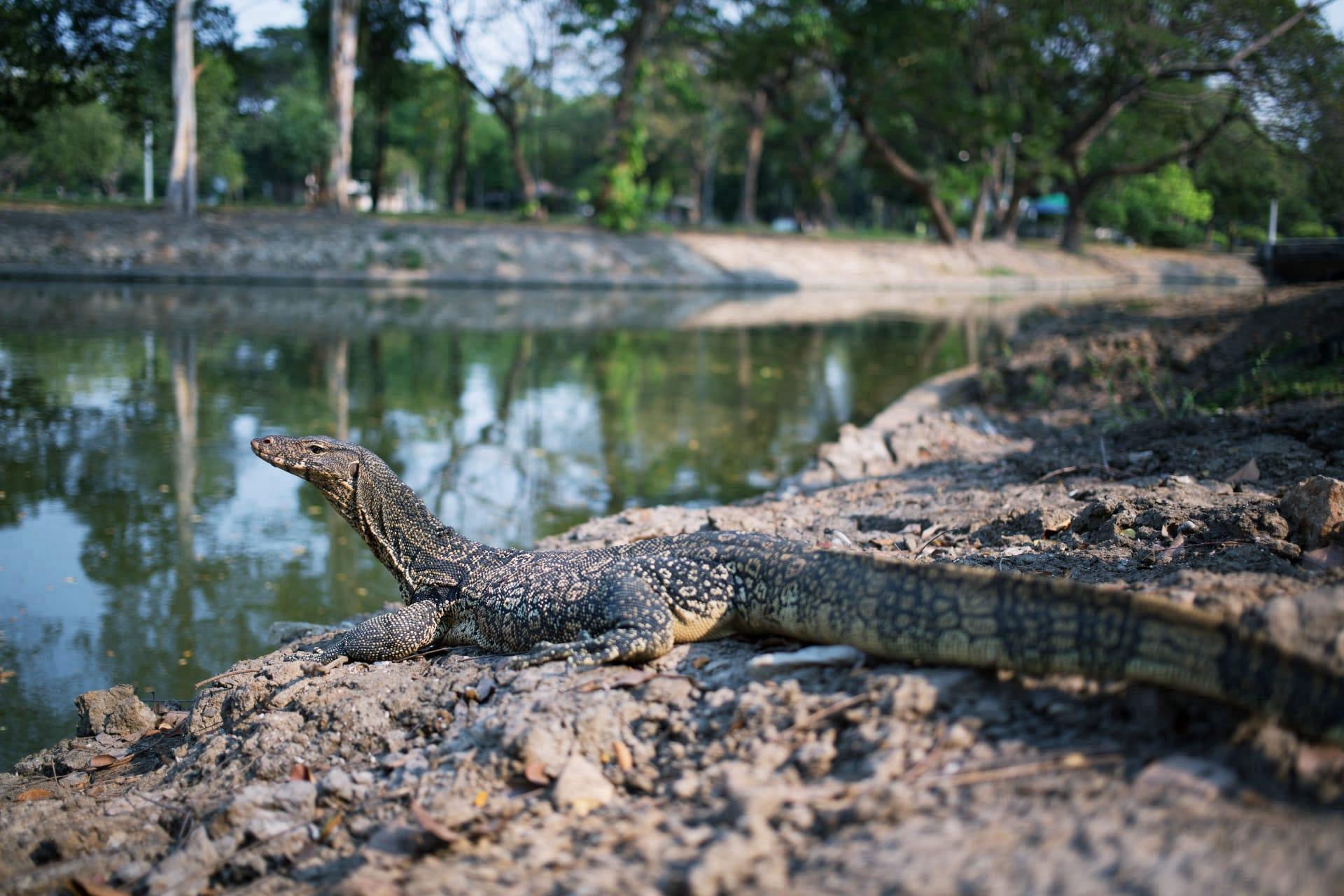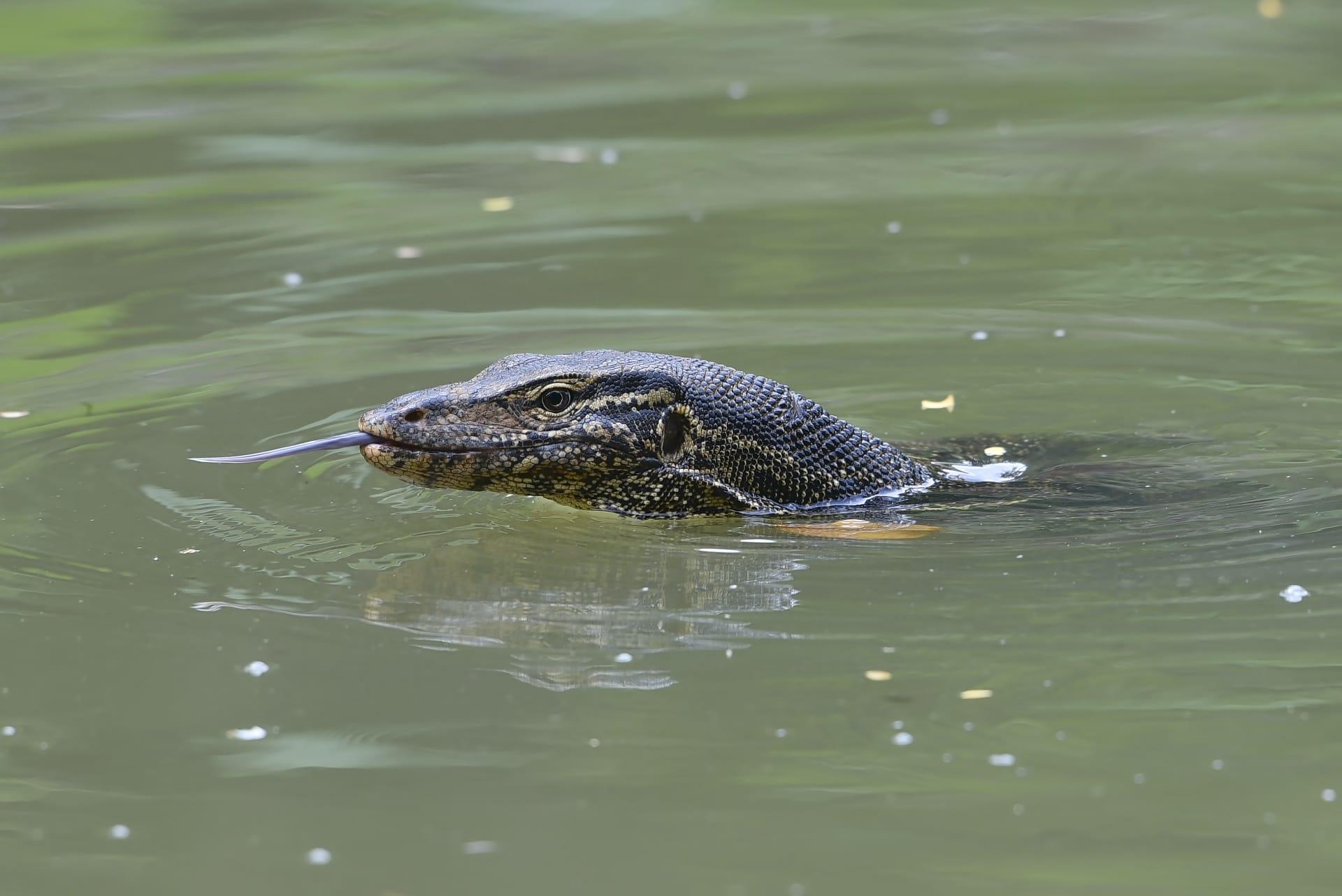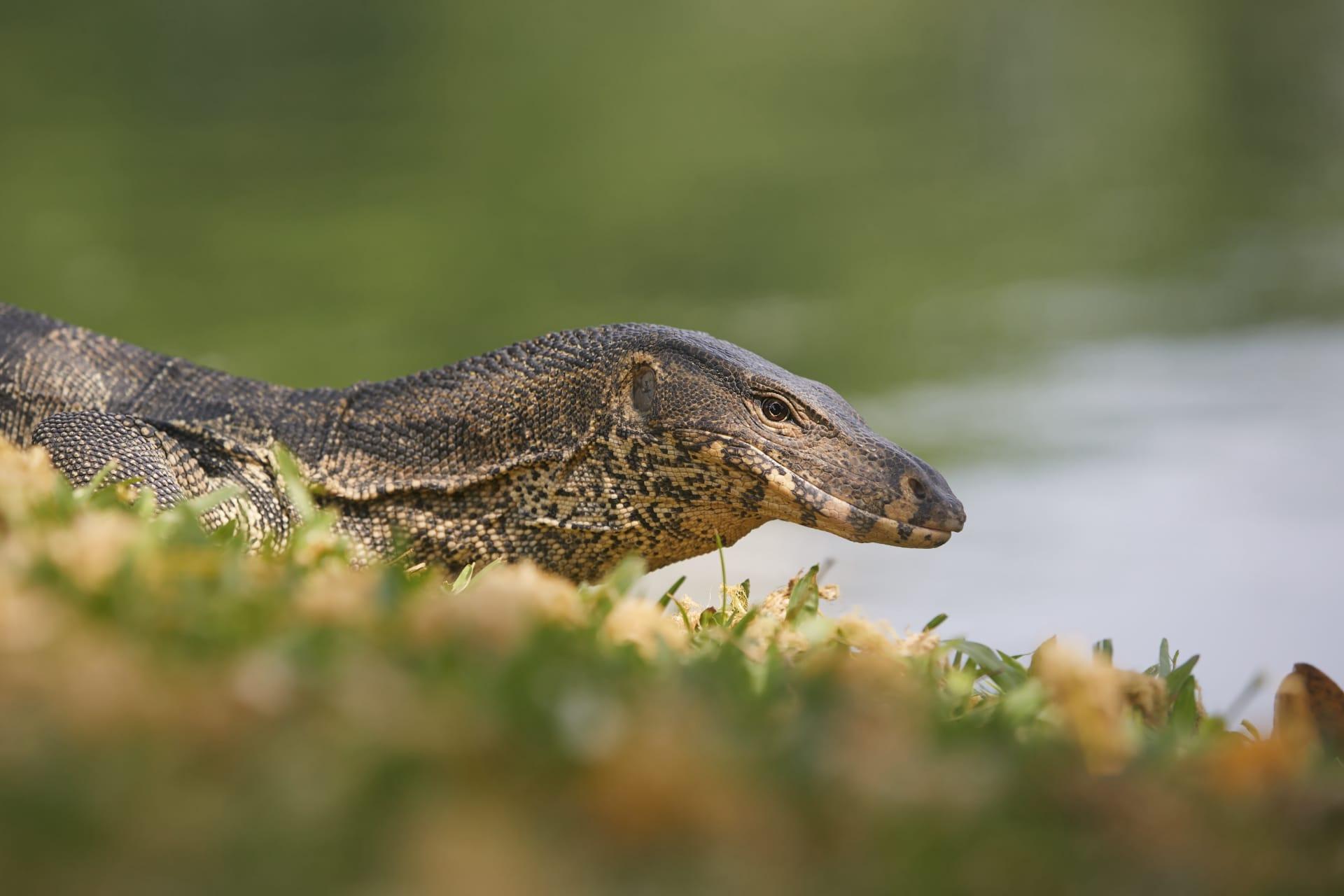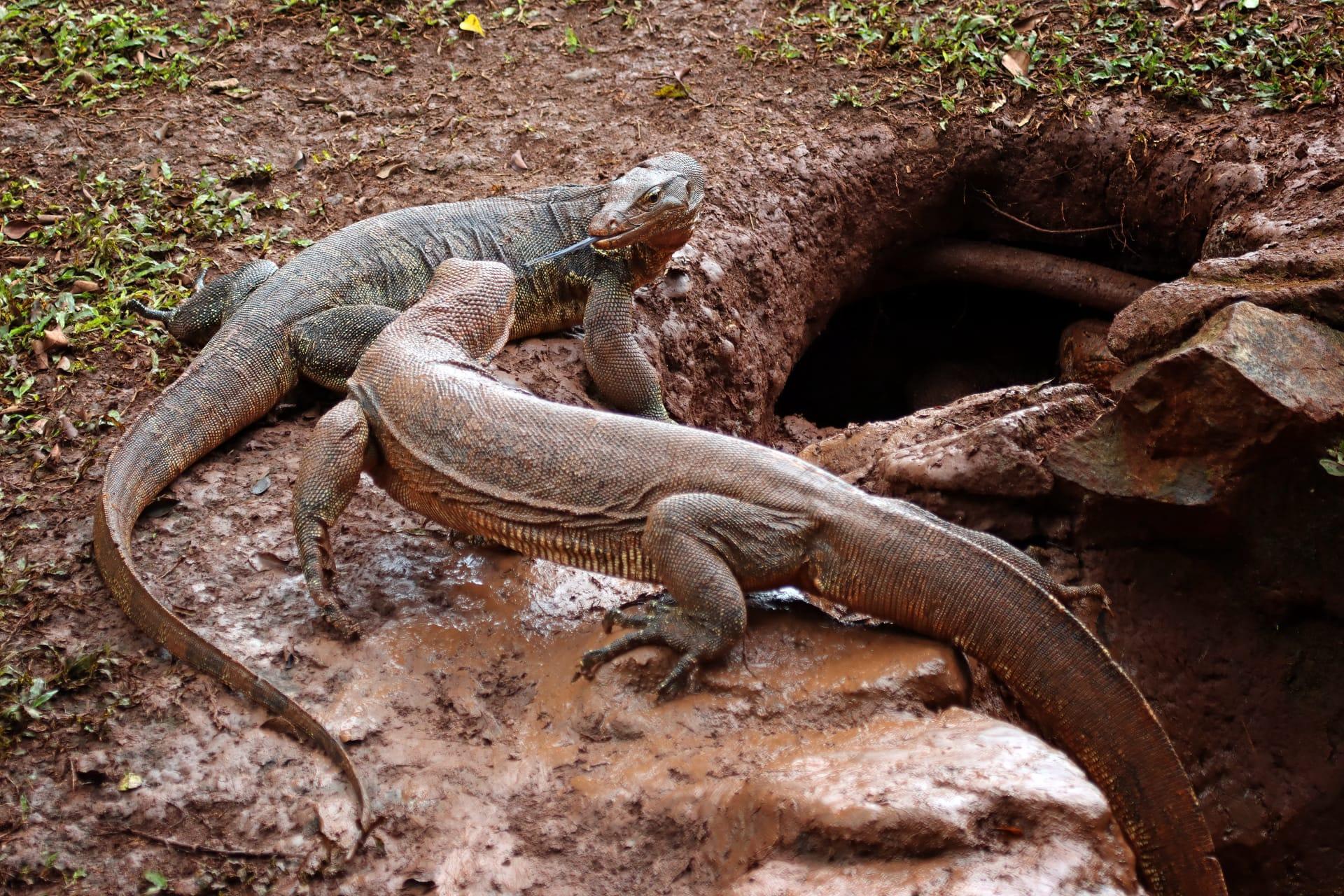Monitor Lizard Characteristics
- Home /
- Mini Encyclopedia /
- Animal /
- Monitor Lizard Characteristics
1
Monitor lizards, a fascinating reptile species, boast impressive physical attributes. With over 70 species, their size can vary dramatically. For instance, the Komodo dragon, the largest, can grow up to 10 feet (3 meters) in length and weigh over 150 pounds (68 kilograms). On the other end of the spectrum, some species remain small, measuring just a few inches in length. Monitor lizards generally have a life expectancy of about 20 years, though this can vary by species. Their robust build, powerful limbs, and well-developed claws make them adept at climbing, digging, and swimming.
One of the most extraordinary organs of monitor lizards is their forked tongue, functioning much like a sensory radar. This remarkable tool, often seen flicking in and out, is used to capture chemical particles from the air. These particles are then processed by the Jacobson's organ located in the roof of their mouth, allowing them to detect prey, navigate their environment, and even communicate. This sensory adaptation is particularly crucial for hunting and survival, making them efficient predators in diverse habitats.

2
Question: Are monitor lizards venomous?
Answer: The notion of monitor lizards being venomous has been a topic of debate and intrigue. Recent research reveals that some species of monitor lizards do possess venom glands. These glands produce a mild venom that can cause swelling and discomfort in humans but is generally not life-threatening. This discovery challenges the previous understanding that their bites were dangerous solely due to bacterial infection. However, it's important to note that the venom's potency varies among different species, with most posing little threat to humans.

3
Monitor lizards exhibit remarkable locomotive features. They are capable of swift movements, both on land and in water. On land, they can run at speeds up to 20 kilometers per hour (12 miles per hour), making them one of the fastest reptiles for their size. Their strong limbs and sharp claws aid in climbing trees or digging burrows for shelter. In water, their long, muscular tails, resembling those of crocodiles, enable them to swim efficiently, an adaptation useful both for hunting and evasion.
When it comes to hunting, monitor lizards are opportunistic predators. They consume a wide range of prey, including insects, smaller reptiles, birds, eggs, and even small mammals. Their hunting strategy often involves stealth, relying on their acute sense of smell and sight to locate prey. Once detected, they can swiftly ambush or pursue their target. Their powerful jaws and sharp teeth allow them to grasp and subdue their prey effectively.

4
Monitor lizards inhabit a variety of environments, ranging from forests and grasslands to deserts and coastal areas. Their adaptability to different climates and terrains is remarkable. Some species, like the Komodo dragon, prefer dry and rocky islands, while others thrive in dense rainforests or riverbanks. This ecological diversity reflects their ability to adjust to varying levels of temperature, humidity, and food availability.
The breeding habits of monitor lizards are as diverse as their habitats. Most species lay eggs, with clutch sizes varying from a few to over 30 eggs, depending on the species. Some exhibit unique nesting behaviors; for example, the Komodo dragon digs decoy nests to deceive predators. The incubation period can range from a few months to over a year, and in some species, the females guard the nest site. Interestingly, temperature often determines the sex of the offspring, a phenomenon known as temperature-dependent sex determination.

5
Book: "Dragons in the Dust: The Paleobiology of the Giant Monitor Lizard Megalania" by Ralph E. Molnar. This insightful book delves into the history and evolution of the now-extinct Megalania, a giant monitor lizard that once roamed Australia. Published in the United States in 2004, Molnar combines fossil evidence with modern monitor lizard behaviors to reconstruct the life of these awe-inspiring creatures, providing readers with a glimpse into prehistoric ecosystems.
Book: "The Biology of Varanid Lizards" by Eric R. Pianka and Dennis R. King. This comprehensive book, published in 2004, offers an in-depth exploration of monitor lizards' biology. The authors, both renowned herpetologists, provide detailed information on the anatomy, physiology, behavior, and ecology of various species across the globe. The book is a valuable resource for anyone interested in understanding the complex world of these fascinating reptiles.